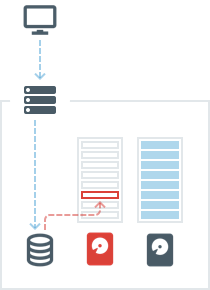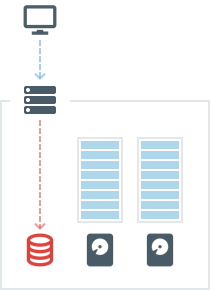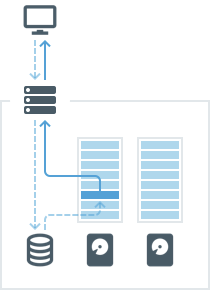DW Spectrum User Manual
The archive index is a special database that stores mapping information for video archive. This database includes which cameras are archived, for which times, and in which chunks exactly the archive is stored. Chunks are the building blocks of video storage, see "To find archive on a storage device".
The client application pulls storage chunks to the Timeline based on the information in the archive index database. When you click on the Timeline to play a given recorded segment, the client sends the server a request for that video. The server checks the archive index to determine where video for that particular moment is stored – on which drive and in which exact chunks. The server reads that particular video and sends it to the client to display.
|
|
There can be situations when information in the archive index doesn’t reflect the actual video archive. For example, if archive has been deleted or manually relocated, the information about that archive will still be in the index database, but the server will not be able to read such archive because it is no longer where the archive index last found it.

Similarly, sometimes there is no information in the archive index about archive that does exist in storage. This can happen if the index database file is corrupted or deleted, or when archive video is added to a storage location manually.

These problem can be fixed by archive reindexing. During this process, the server will scan all recordings on all drives and update the archive index database with the current information. Archive reindexing is initiated from the Storage Management dialog for each server, and can be performed for main or backup storage locations (see "Reindexing Archives").




